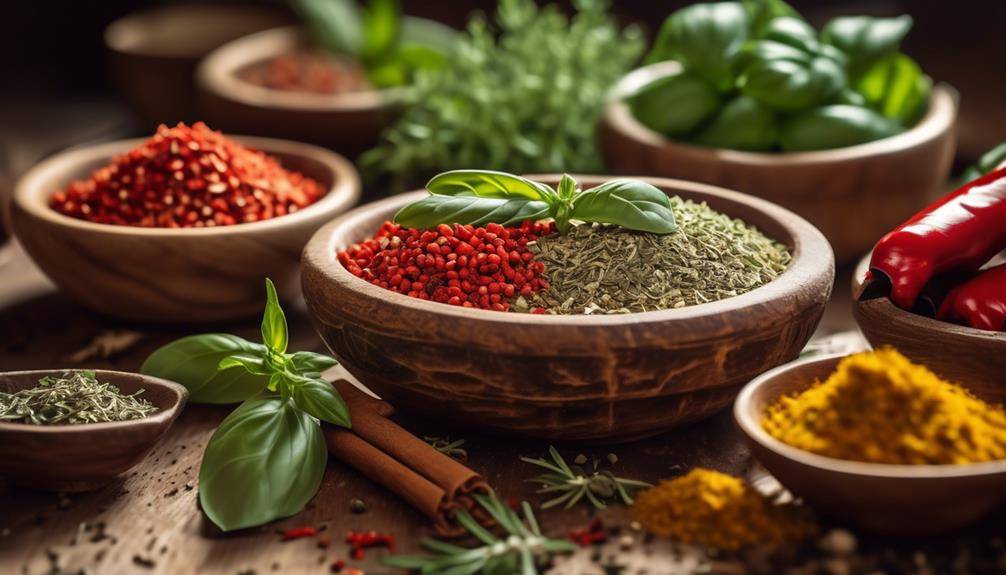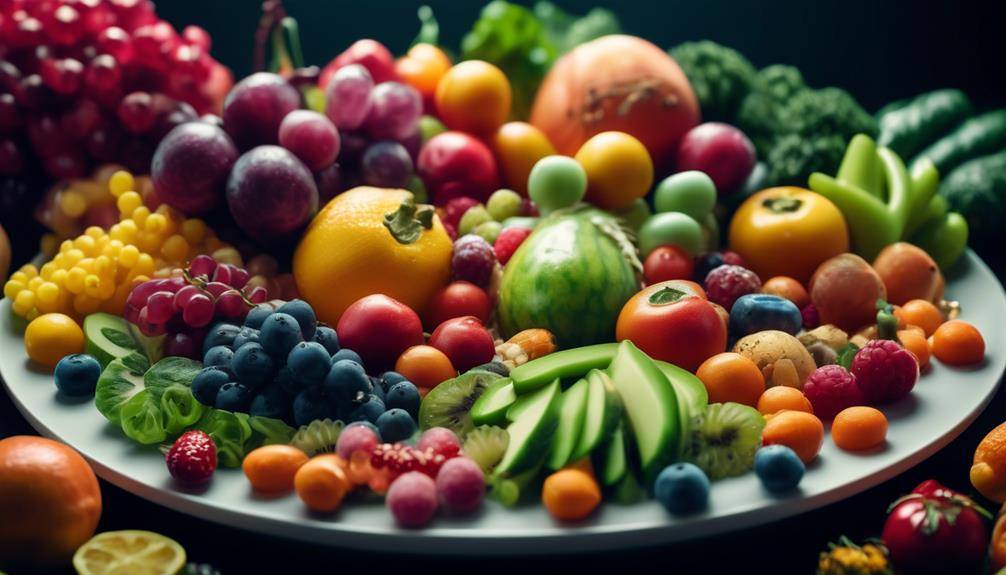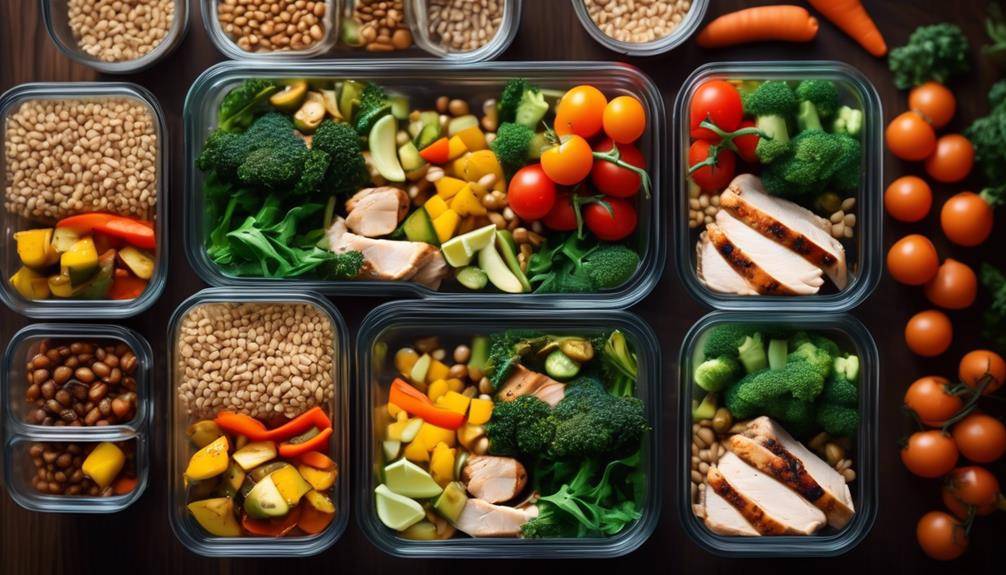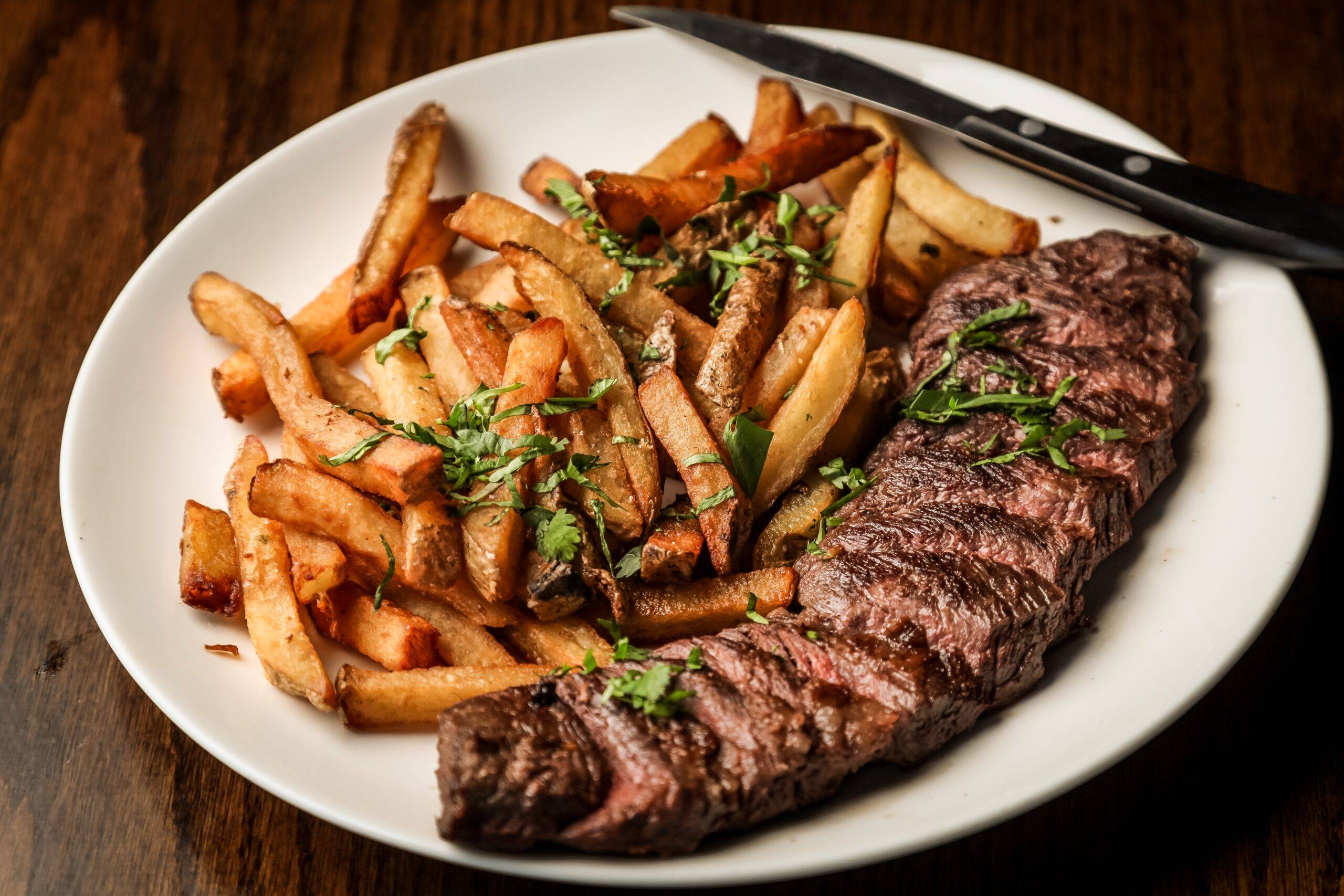9 Amazing Cooking Techniques for Nutritious Meals

Cooking Techniques for Nutritious Meals; Have you ever wondered how to make nutritious meals that are delicious and easy to prepare? Well, it just so happens that we have 9 essential cooking techniques that will help you do just that. From roasting and steaming to sautéing and grilling, these techniques will bring out the flavors in your ingredients while retaining their nutritional value. Whether you’re poaching, braising, stir-frying, boiling, or baking, each technique has its own unique way of enhancing the taste and texture of your meals. So, if you’re ready to take your cooking skills to the next level and create nutritious dishes that will impress your friends and family, let’s dive into these essential cooking techniques together!
Roasting
To achieve flavorful and healthy meals, start by mastering the art of roasting with the use of olive oil and a pinch of salt and pepper. Roasting is a cooking technique that enhances flavors and achieves crispy textures, making it perfect for a variety of ingredients, from vegetables to meats.
When you roast food, you expose it to high heat in the oven, allowing the natural sugars to caramelize and develop a rich, deep flavor. The process also creates a beautiful golden brown crust on the outside, adding a delightful crunch to your dishes. Roasting is a versatile method that can be used for a wide range of ingredients, including but not limited to potatoes, carrots, chicken, and salmon.
To get started, preheat your oven to the recommended temperature, usually around 400-450°F. While the oven is heating up, prepare your ingredients by cutting them into even-sized pieces. This ensures that everything cooks evenly and at the same rate. Drizzle olive oil over the ingredients and season with a pinch of salt and pepper. Toss everything together to ensure even coating.
Spread the ingredients in a single layer on a baking sheet, making sure they are not overcrowded. This allows the hot air to circulate around the food, resulting in a more even cooking process. Place the baking sheet in the preheated oven and let the ingredients roast until they are tender and golden brown.
Remember to flip the ingredients halfway through the cooking time to ensure even browning. The cooking time will vary depending on the ingredients and their size, so keep a close eye on them to avoid overcooking. Once roasted to perfection, remove from the oven and let the food rest for a few minutes before serving to allow the juices to redistribute.
Steaming
Continue enhancing the flavors and textures of your meals by incorporating the cooking technique of steaming. Steaming is a healthy and nutritious method of cooking that involves exposing food to steam from boiling water. This gentle cooking method helps to retain the natural flavors, colors, and nutrients of the ingredients, making it a popular choice for health-conscious individuals.
One of the key benefits of steaming is its ability to preserve the nutrients in the food. Unlike other cooking methods like boiling, steaming uses minimal water, which means that the water-soluble vitamins and minerals are not lost in the cooking process. Steaming also helps to retain the natural colors of vegetables, making them visually appealing and appetizing.
When comparing steaming to boiling, steaming is considered to be the healthier option. Boiling involves immersing food in water, which can lead to nutrient loss. On the other hand, steaming only requires the food to come into contact with the hot steam, ensuring that the nutrients are preserved. Steaming also helps to maintain the texture of the food, resulting in a more enjoyable eating experience.
To steam food, you can use a steamer basket, a bamboo steamer, or even a colander placed over a pot of boiling water. Make sure to choose fresh and high-quality ingredients for steaming to maximize the nutritional benefits. Steaming is a versatile cooking technique that can be used for a variety of foods, including vegetables, fish, poultry, and even desserts.
Incorporating steaming into your cooking routine is a simple and effective way to create nutritious meals. By preserving the nutrients and enhancing the flavors of your ingredients, steaming allows you to enjoy delicious and wholesome dishes. So why not give steaming a try and experience the many benefits it has to offer?
Sautéing
Enhance your cooking skills by mastering the technique of sautéing, a versatile method that adds depth and flavor to your meals. Sautéing involves quickly cooking food in a small amount of oil or fat over high heat. This cooking technique is perfect for vegetables, meats, and seafood, as it allows them to retain their natural flavors and textures while developing a delicious caramelized exterior.
To achieve flavorful sautéing, start by selecting the right pan. A wide, shallow pan with straight sides and a thick bottom is ideal for even heat distribution. Next, choose an oil or fat that can withstand high temperatures, such as olive oil, coconut oil, or ghee. Heat the oil in the pan over medium-high heat until it shimmers.
When it comes to sautéing, it’s important to cut your ingredients into uniform pieces to ensure even cooking. Add your ingredients to the hot pan in a single layer, allowing each piece to have direct contact with the heat. Avoid overcrowding the pan, as this can lead to steaming rather than sautéing.
While sautéing, you should constantly toss or stir the ingredients to prevent them from sticking or burning. Use a spatula or tongs to flip and move the food around the pan. This will help to evenly cook the ingredients and develop a golden brown color.
To make your sautéed dishes healthier, consider incorporating these cooking tips. Firstly, use less oil or opt for a cooking spray to reduce the overall fat content. Secondly, choose lean proteins, like chicken breast or fish, and load up on vegetables to increase the nutritional value of your meal. Lastly, season your sautéed dishes with herbs, spices, and citrus juices instead of using excessive salt or butter.
Grilling
Master the art of grilling to elevate your cooking skills and create delicious, flavorful meals with a distinct smoky char. Grilling is a popular cooking method that not only adds a unique flavor to your food but also offers several health benefits. Here are three key factors to consider when grilling:
- Grilling vs. Broiling: Which cooking method is better for health?
Grilling and broiling are both high-heat cooking methods that can help retain the nutrients in your food. However, grilling is generally considered a healthier option as it allows the excess fat to drip off, resulting in lower calorie content. Broiling, on the other hand, involves cooking food directly under high heat, which may lead to the formation of potentially harmful compounds. To minimize this risk, it is recommended to marinate your food before grilling or broiling, as marinades have been shown to reduce the formation of these compounds.
- The art of marinating: Tips for enhancing flavor when grilling.
Marinating your food is a great way to enhance its flavor and tenderness. To create a flavorful marinade, combine ingredients like oil, vinegar, citrus juice, herbs, and spices. It is important to let the food marinate for at least 30 minutes to allow the flavors to penetrate. Additionally, using an acidic ingredient like lemon juice or vinegar in your marinade can help tenderize the meat and make it more succulent.
- Proper grilling techniques for optimal results.
To ensure your food cooks evenly and retains its juiciness, preheat your grill for about 10-15 minutes before cooking. Keep the grill clean and well-oiled to prevent sticking and flare-ups. When grilling meat, use a meat thermometer to check for doneness and avoid overcooking. Remember to let the meat rest for a few minutes before serving to allow the juices to redistribute.
Poaching
To further expand your repertoire of essential cooking techniques, let’s explore the art of poaching and how it can elevate your culinary skills while maintaining the nutritional value of your meals. Poaching is a gentle cooking method that involves submerging food in a liquid, such as water, broth, or milk, and cooking it at a low temperature. This technique is particularly beneficial for preserving the natural flavors, textures, and nutrients of the ingredients.
One of the key benefits of poaching is its ability to retain moisture in the food. By cooking the ingredients in a liquid environment, the food remains moist and tender, resulting in a succulent and flavorful dish. Poaching is also a healthy cooking method as it requires little to no added fats, making it a great option for those looking to reduce their calorie intake or follow a low-fat diet.
There are various variations of poaching that you can explore. For delicate proteins like fish or eggs, gentle simmering is recommended to achieve a perfectly cooked result. For fruits, such as pears or peaches, a sweet poaching liquid, infused with spices like cinnamon or vanilla, can add a delightful flavor to the dish. You can also experiment with different liquids, such as wine or vegetable broth, to impart unique flavors to your poached dishes.
To achieve perfectly poached dishes, here are some tips to keep in mind. Firstly, ensure that the liquid is at the right temperature before adding the food. It should be gently simmering, not boiling, as high heat can lead to overcooking or toughening of the ingredients. Secondly, add your ingredients gently to avoid breaking them apart. Lastly, maintain a consistent temperature throughout the cooking process by adjusting the heat as needed.
Incorporating poaching into your cooking repertoire can open up a world of possibilities for creating flavorful and nutritious meals. Whether you’re poaching fish, eggs, or fruits, this gentle cooking technique will help you achieve tender and delicious results. So why not give poaching a try and elevate your culinary skills to new heights?
Braising
Now let’s delve into the art of braising, a cooking technique that builds upon the principles of poaching to create flavorful and tender dishes. Braising involves slow cooking food in a small amount of liquid, usually with the lid on, resulting in moist and succulent meats. Here are three key benefits of slow cooking through braising:
- Enhanced flavor: Braising allows flavors to meld together as the food cooks slowly over low heat. The long cooking time allows the meat to absorb the flavors of the aromatic ingredients and seasonings, resulting in a rich and complex taste.
- Tenderness: The slow and gentle cooking process of braising helps to break down the tough connective tissues in meats, resulting in tender and melt-in-your-mouth texture. The low heat and moist environment soften the meat fibers, making them easier to chew and digest.
- Versatility: Braising is a versatile technique that can be used for various types of meats, such as beef, pork, lamb, and poultry. It also works well with vegetables, allowing you to create hearty and satisfying vegetarian dishes. The slow cooking method brings out the natural flavors of the ingredients, making it suitable for a wide range of recipes.
To achieve tender and flavorful meats through braising, here are a few tips:
- Choose the right cut: Tougher cuts of meat, such as chuck, brisket, or short ribs, are ideal for braising. These cuts have more connective tissues that break down during the long cooking process, resulting in tender meat.
- Brown the meat: Before braising, sear the meat on all sides in a hot pan. This step adds a layer of flavor and helps to caramelize the surface, enhancing the overall taste and appearance of the dish.
- Use the right amount of liquid: Add enough liquid to cover about two-thirds of the meat. This ensures that the meat stays moist and tender throughout the cooking process. You can use broth, wine, or a combination of both to create a flavorful braising liquid.
Stir-frying
Get ready to make quick and flavorful meals by mastering the technique of stir-frying. Stir-frying is a cooking method that originated in China and has gained popularity worldwide for its ability to create delicious and nutritious dishes in a short amount of time. With healthy stir fry recipes and a few quick stir fry tips and tricks, you can easily incorporate this technique into your daily cooking routine.
To begin, it’s important to choose the right ingredients for your stir fry. Opt for fresh vegetables like bell peppers, broccoli, carrots, and snap peas, which not only add vibrant colors but also provide essential vitamins and minerals. You can also include lean proteins such as chicken, shrimp, tofu, or beef to make your stir fry more satisfying and nutritious.
When it comes to cooking, heat is key. Preheat your wok or skillet over high heat to ensure that your ingredients cook quickly and evenly. Use a small amount of oil with a high smoke point, like canola or peanut oil, to prevent sticking and achieve that characteristic stir-fry flavor.
To add flavor to your stir fry, experiment with different sauces and seasonings. A simple combination of soy sauce, garlic, and ginger can create a savory base, while adding a splash of lime juice or a sprinkle of sesame seeds can enhance the overall taste. Be mindful of the amount of sauce you use, as too much can make your dish overly salty or soggy.
Lastly, don’t overcook your ingredients. Stir-frying is all about maintaining the crispness and vibrant colors of the vegetables. Cook them quickly, stirring constantly, until they are just tender but still retain their crunch.
With these quick stir fry tips and tricks, you can create nutritious and delicious meals in no time. So, grab your wok, chop up some fresh ingredients, and get ready to enjoy the flavors of stir-frying!
Boiling
- Boiling is a fundamental cooking technique that allows you to cook ingredients in boiling water, bringing out their natural flavors and creating delicious and nutritious meals.
Boiling is a versatile cooking method that can be used to prepare a wide range of dishes, from healthy soup recipes to perfectly cooked pasta. Here are three tips to help you master the art of boiling:
- Choose the right pot: When boiling ingredients, it’s important to use a pot that is large enough to accommodate the food without overcrowding. This ensures that the ingredients cook evenly and retain their texture and flavor. Additionally, using a pot with a tight-fitting lid helps to trap steam, reducing cooking time and preserving the nutrients in the food.
- Salt the water: Adding salt to the boiling water not only enhances the flavor of the ingredients but also helps to season them evenly. It’s recommended to use about a tablespoon of salt for every 4 liters of water. However, if you’re watching your sodium intake, you can reduce the amount of salt or omit it altogether.
- Cook with precision: Different ingredients require different boiling times to achieve the desired doneness. It’s important to follow recipes or cooking guidelines to ensure that your food is cooked perfectly. Overcooking can result in mushy vegetables or soggy pasta, while undercooking can leave your food raw and unpleasant to eat.
Baking
To bake nutritious meals, you’ll need to master the art of using the oven. Baking is a versatile cooking technique that can be used to create a wide variety of delicious and healthy dishes, including pastries and breads. Whether you’re a beginner or an experienced cook, here are some baking tips to help you achieve perfect results every time.
When it comes to pastries and breads, one of the most important things to remember is to use the right ingredients. Make sure to use fresh and high-quality ingredients, such as flour, butter, eggs, and sugar. Additionally, be sure to measure your ingredients accurately to achieve the desired texture and taste.
Another key factor in successful baking is understanding the science behind it. Oven temperatures and baking times play a crucial role in the outcome of your baked goods. Different recipes require different temperatures and times, so it’s important to follow the instructions carefully. Preheating your oven is also essential to ensure even baking.
To achieve a perfect texture and browning, it’s important to know your oven well. Every oven is different, so it’s a good idea to invest in an oven thermometer to ensure accurate temperature readings. Additionally, be mindful of hot spots in your oven and rotate your pans if necessary to ensure even baking.
Frequently Asked Questions: Cooking Techniques for Nutritious Meals
How Can I Ensure That My Roasted Vegetables Are Crispy on the Outside and Tender on the Inside?
To ensure your roasted vegetables are crispy on the outside and tender on the inside, try these tips: preheat your oven, cut the vegetables evenly, toss them in oil, spread them in a single layer, and roast at a high temperature.
What Are Some Creative Ways to Use a Steamer Basket Besides Just Cooking Vegetables?
Looking for creative ways to use your steamer basket? Besides cooking vegetables, you can make delicious desserts like steamed puddings or even dumplings. And if you’re tired of using water to poach eggs, try using broth or wine for a flavorful twist.
Are There Any Specific Types of Meat or Fish That Are Better Suited for Sautéing?
For sautéing, lean cuts of meat like chicken breast, pork tenderloin, or sirloin steak work well. As for fish, opt for varieties like salmon, trout, or sea bass that have a firm texture and won’t fall apart easily.
How Can I Prevent My Grilled Meats From Sticking to the Grill Grates?
To prevent your grilled meats from sticking to the grill grates, make sure to preheat the grill properly, oil the grates before cooking, and refrain from moving the meat too early. These techniques will ensure a non-stick grilling experience.
Can I Poach Eggs in a Different Liquid Besides Water for Added Flavor?
Yes, you can poach eggs in alternative liquids for added flavor. Try using broth, tomato sauce, or even wine. It’s a creative way to elevate your dish and experiment with different flavors.
Conclusion
In conclusion, mastering these essential cooking techniques can help you create nutritious meals that are packed with flavor and retain their nutritional value. Whether you’re roasting, steaming, sautéing, grilling, poaching, braising, stir-frying, boiling, or baking, each method offers its own benefits and allows you to explore a variety of ingredients. By incorporating these techniques into your cooking repertoire, you can enhance the taste and nutritional quality of your meals, making them both delicious and nourishing.








